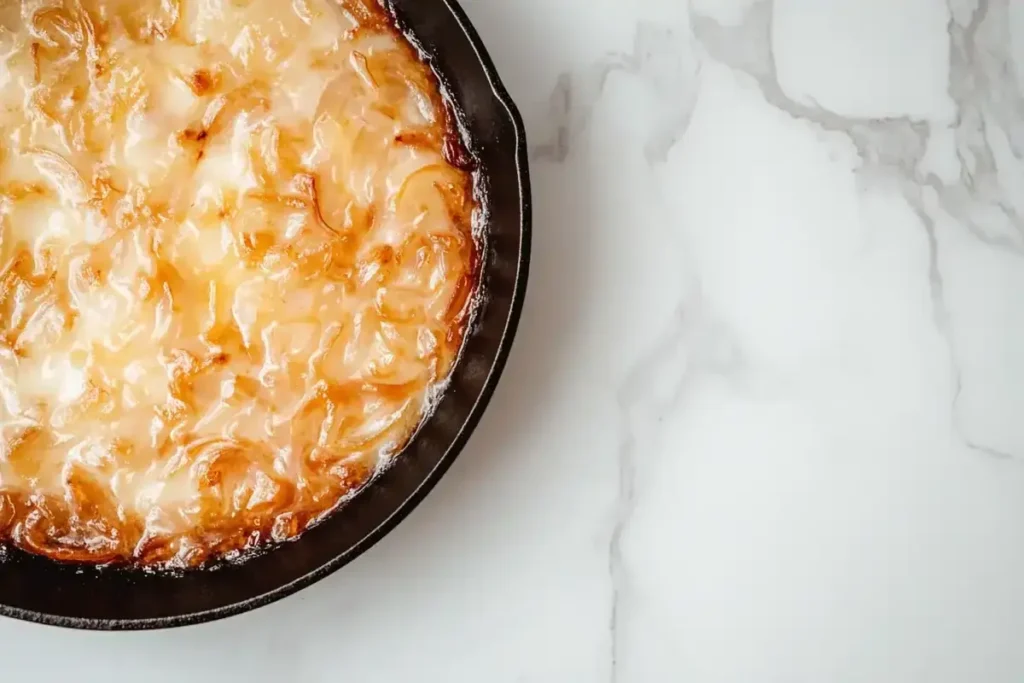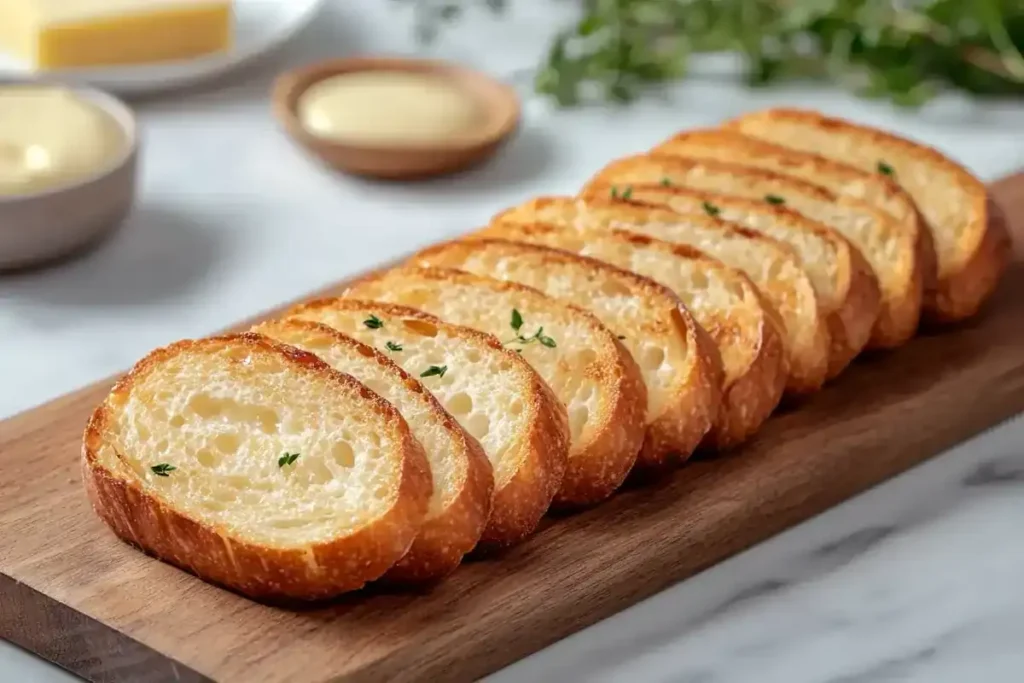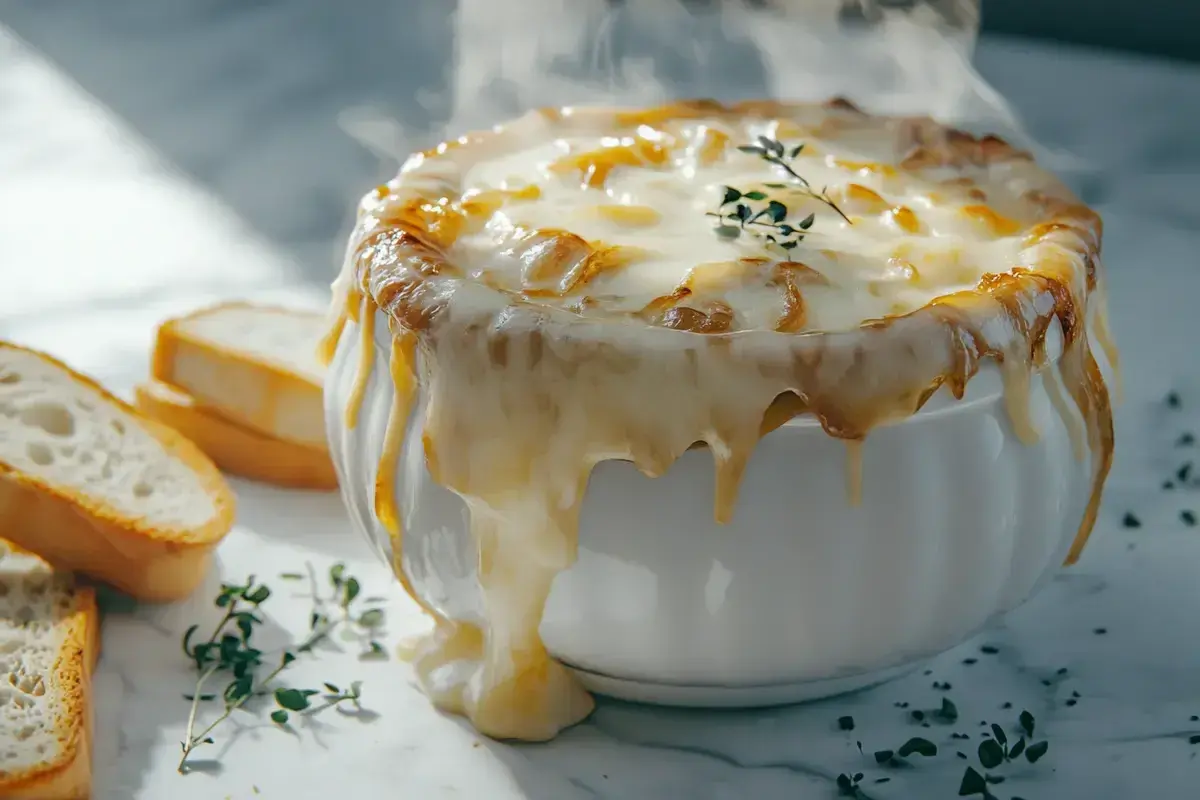What Is Special About French Onion Soup?
French onion soup is more than just a dish—it’s an experience. Known for its rich flavor, bubbling cheesy topping, and deep history, this soup is a true classic in French cuisine. From its humble beginnings as a peasant dish to becoming a culinary favorite worldwide, French onion soup combines simplicity with sophistication. In this article, we’ll explore what makes it so unique, delve into its rich history, share a classic recipe, and answer common questions about this timeless comfort food.
Part 1: The Origins and History of French Onion Soup
A Dish Rooted in French Tradition
French onion soup dates back to Roman times but gained its iconic status in 18th-century France. It was originally a modest dish made by caramelizing onions and simmering them in water or broth—a way to make the most of simple, affordable ingredients. French peasants relied on onions because they were inexpensive and available year-round. Over time, this unassuming recipe evolved into the decadent soup we know today.
Key Moments in French Onion Soup’s History
Legend has it that King Louis XV created the soup by accident when left with just onions, butter, and champagne during a hunting trip. Another tale attributes its popularity to French chef Marie-Antoine Carême, who elevated the dish in the 19th century. French onion soup gained international recognition in the 20th century as it became a staple in French restaurants worldwide, symbolizing comfort and culinary finesse.
If you’re exploring classic French recipes, check out our site web for another timeless dish.
Part 2: Unique Ingredients That Make It Stand Out
Caramelized Onions: The Heart of the Soup
The rich, sweet flavor of French onion soup starts with perfectly caramelized onions. Achieving the deep golden-brown color requires patience and low heat, allowing the natural sugars in the onions to break down slowly. Yellow onions are often preferred for their balance of sweetness and acidity, though sweet or red onions can also work.
Rich Broth: A Key Component
A high-quality broth is essential for French onion soup. Traditional recipes use beef broth for its robust flavor, but chicken or vegetable broths are suitable alternatives. Adding a splash of wine or sherry deepens the soup’s flavor, lending complexity and a hint of acidity that balances the sweetness of the onions.
Cheese and Croutons: The Topping that Elevates
One of the most distinctive features of French onion soup is its topping. A slice of toasted baguette, topped with Gruyère or Comté cheese, is broiled until bubbling and golden. This combination of crispy bread and gooey cheese contrasts beautifully with the savory broth below, making every spoonful a delight.
Part 3: How to Make Classic French Onion Soup at Home
Ingredients for the Recipe
To prepare authentic French onion soup, you’ll need:
- 4 large yellow onions, thinly sliced
- 4 tablespoons unsalted butter
- 2 tablespoons olive oil
- 1 teaspoon sugar (optional, to enhance caramelization)
- 1/4 cup dry white wine or sherry
- 6 cups beef broth (or vegetable broth for a lighter option)
- 1 teaspoon fresh thyme leaves
- 1 bay leaf
- Salt and pepper to taste
- 1 French baguette, sliced into 1-inch rounds
- 2 cups grated Gruyère cheese (or Comté)
Step-by-Step Cooking Instructions
- Prepare the Onions:
Heat butter and olive oil in a large pot over medium heat. Add the sliced onions and cook, stirring occasionally, for about 10 minutes. Sprinkle with sugar and continue cooking on low heat for 30-40 minutes, stirring frequently, until the onions are deeply caramelized. - Deglaze the Pan:
Pour in the wine or sherry and scrape up any browned bits from the bottom of the pot. Let it simmer for 2-3 minutes to reduce slightly. - Add the Broth and Herbs:
Stir in the beef broth, thyme, and bay leaf. Season with salt and pepper. Bring the soup to a boil, then reduce the heat and let it simmer uncovered for 20-30 minutes. - Prepare the Croutons:
While the soup simmers, preheat your broiler. Arrange baguette slices on a baking sheet, toast lightly on both sides, and set aside. - Assemble and Broil:
Ladle the soup into oven-safe bowls. Place a toasted baguette slice on top of each bowl, then sprinkle generously with grated cheese. Broil for 2-3 minutes, or until the cheese is melted and bubbly. - Serve:
Carefully remove the bowls from the broiler and let them cool slightly before serving.
Learn more about the art of caramelizing onions with our step-by-step guide
Nutritional Information
| Component | Amount (Per 100g) |
|---|---|
| Calories | 80 |
| Protein | 3g |
| Fat | 4g |
| Carbohydrates | 9g |
| Sodium | 480mg |
Part 4: Why French Onion Soup Is a Culinary Classic
French onion soup has remained a beloved dish for centuries, captivating diners with its simplicity and sophistication. Its status as a culinary classic is rooted in its harmonious combination of flavors, textures, and cultural significance. Let’s explore in greater depth what makes this iconic dish so special.
Timeless Appeal of Simplicity
One of the key reasons French onion soup stands out is its ability to transform humble ingredients into a masterpiece. At its core, the soup relies on just a few staples: onions, broth, bread, and cheese. Yet, the slow caramelization of onions, the layering of flavors, and the attention to detail elevate it to an entirely different level.
This simplicity also makes it highly accessible. Anyone with basic cooking skills can attempt the recipe, yet the end result feels indulgent and sophisticated. Whether it’s served at a high-end restaurant or cooked in a home kitchen, French onion soup delivers the same comforting, rich experience.
- Versatility in Ingredients:
While the classic recipe calls for Gruyère cheese and beef broth, substitutions like Emmental cheese or vegetable stock allow cooks to customize the dish to suit their tastes or dietary needs. - Wide Appeal:
Its combination of sweet, savory, and umami flavors ensures it appeals to a broad audience. Even those who claim not to like onions often find themselves drawn to its balanced taste.
Cultural Significance
French onion soup is more than just a dish—it’s a symbol of French culinary heritage. In France, it’s a testament to the philosophy of using simple, high-quality ingredients to create something extraordinary.
- From Peasant Roots to Fine Dining:
The dish’s origins as a peasant food reflect its accessibility and resourcefulness. However, as it gained popularity in Parisian bistros and restaurants, it became synonymous with French sophistication. Today, it’s celebrated as both comfort food and a gourmet delicacy. - A Global Ambassador of French Cuisine:
French onion soup is one of the most recognizable French dishes internationally. Its presence on menus around the world showcases the universal admiration for French cooking. Whether it’s enjoyed in a bustling café in Paris or a local eatery in New York, the soup connects diners to the heart of France’s culinary traditions. - Rituals and Occasions:
In France, French onion soup is often associated with festive occasions or late-night gatherings. It’s a popular choice during the holiday season, when its warmth and depth provide comfort on cold evenings.
A Perfect Harmony of Flavors and Textures
French onion soup’s magic lies in its ability to balance contrasting elements, creating a dish that satisfies on multiple levels:
- The Sweetness of Caramelized Onions:
The slow cooking process brings out the natural sweetness of onions, which pairs beautifully with the savory broth. - The Richness of Broth:
A well-made broth provides the foundation for the soup’s depth. Whether beef or vegetable-based, it enhances the dish with umami richness. - The Crispness of Croutons and the Creaminess of Cheese:
The toasted bread and melted cheese topping create a delightful contrast to the silky soup below. The slight crunch of the croutons gives way to the creamy, gooey cheese, adding a luxurious finish to every bite.
A Dish That Stands the Test of Time
Few dishes can claim the enduring popularity of French onion soup. Its appeal transcends generations, regions, and culinary trends. While some foods fade in and out of fashion, this dish remains a comforting constant on menus worldwide.
- Seasonal Versatility:
While often enjoyed in colder months, its light yet hearty nature makes it suitable for any season. In spring or summer, it pairs well with fresh salads, while in winter, it’s a warming centerpiece. - Adaptability for Modern Palates:
As dining preferences evolve, French onion soup has proven its adaptability. Vegan, gluten-free, and low-sodium versions allow it to remain relevant without losing its essence.
Why It Deserves Its Place in Culinary History
Ultimately, French onion soup’s enduring popularity comes down to its ability to evoke emotion. It’s a dish that feels nostalgic yet exciting, simple yet complex. Whether it’s the first time trying it or a regular indulgence, each spoonful tells a story of tradition, innovation, and the magic of cooking.
In this way, French onion soup isn’t just a culinary classic—it’s a celebration of the joy food can bring.
Part 5: Tips and Tricks for the Perfect French Onion Soup
Creating the perfect French onion soup is as much about the process as it is about the ingredients. Small adjustments and attention to detail can make all the difference. Whether you’re a seasoned chef or a beginner, these tips will help you master this timeless dish.

Perfecting Caramelized Onions
Caramelized onions are the soul of French onion soup, so it’s essential to get this step right. Achieving that deep golden-brown color requires patience and care.
- Use the Right Onions: Yellow onions are the go-to choice for their balance of sweetness and acidity. Sweet onions can also be used for a richer flavor, but avoid red onions as they can turn bitter.
- Low and Slow Cooking: Set your stovetop to medium-low heat and give the onions plenty of time to break down. Rushing the process can lead to uneven caramelization or burning.
- Deglaze the Pan: If the onions stick to the bottom of the pan, don’t worry! Use a splash of water, wine, or broth to deglaze the pan and scrape up those flavorful browned bits.
- Add Sugar Sparingly: If your onions aren’t sweet enough, a small pinch of sugar can help enhance their natural sweetness.
By following these steps, you’ll achieve onions that are soft, sweet, and loaded with flavor—the perfect base for your soup.
Choosing the Right Cheese and Bread
The cheese and bread topping is what transforms French onion soup from a simple dish into a showstopper. Getting these elements right ensures your soup has the perfect balance of crunch and creaminess.
- Opt for Authentic Cheeses: Gruyère is the classic choice for its nutty, melty texture. Comté or Emmental are great substitutes if Gruyère is unavailable. For a bold twist, mix in a touch of Parmesan or aged cheddar.
- Prep the Bread Properly: French baguette slices are ideal for croutons due to their sturdy texture. Toast the slices lightly before adding them to the soup to prevent them from becoming overly soggy.
- Cheese Coverage Matters: Be generous with your cheese! Cover the entire surface of the soup bowl to create that irresistible golden crust.
Balancing Flavors in the Broth
A well-balanced broth ties the entire dish together. It should be rich and savory but not overpowering.
- Choose a Quality Broth: Homemade beef broth offers the deepest flavor, but store-bought varieties can work if time is short. Just make sure to select low-sodium options to control the saltiness.
- Wine or No Wine: Adding dry white wine or sherry enhances the complexity of the broth. If you prefer to skip alcohol, substitute with a splash of apple cider vinegar or lemon juice for acidity.
- Season Gradually: Taste the soup as it simmers and adjust the seasoning as needed. Avoid adding too much salt at once, especially if your broth or cheese is already salty.
Presentation and Serving Tips
The final presentation of French onion soup is just as important as its preparation.
- Use Oven-Safe Bowls: Traditional French onion soup is served in individual oven-safe bowls or ramekins, allowing the cheese to melt and bubble beautifully under the broiler.
- Layer Thoughtfully: Start by ladling the hot soup into the bowl, then place the toasted croutons on top, followed by a generous layer of cheese.
- Serve Immediately: French onion soup is best enjoyed piping hot, with the cheese still gooey and the croutons perfectly crisp.
Pair this soup with our hearty vegetable soup for a cozy, satisfying meal.
Common Mistakes to Avoid
Even experienced cooks can make missteps when preparing French onion soup. Here’s how to steer clear of common pitfalls:
- Burning the Onions: Avoid using high heat, which can scorch the onions before they caramelize properly. Stir frequently to prevent sticking.
- Soggy Croutons: Toasting the bread thoroughly ensures it holds its structure when placed on the soup.
- Overloading with Cheese: While cheese is essential, too much can overwhelm the dish and make it heavy. Strike a balance between flavor and texture.
By keeping these tips and tricks in mind, you’ll be well on your way to mastering French onion soup. Whether you’re preparing it for a cozy dinner at home or impressing guests, these small adjustments will elevate your soup to new heights. Let me know if you’d like further refinements or additional suggestions!

Part 6: Frequently Asked Questions (FAQs)
1. What Makes French Onion Soup Different from Other Soups?
French onion soup stands out for its deeply caramelized onions, rich broth, and the iconic topping of toasted baguette and melted Gruyère cheese. Unlike other soups, its flavor hinges on slow cooking and layering simple ingredients to create a dish with incredible depth and texture.
2. Can I Make French Onion Soup Without Wine?
Absolutely! While wine or sherry enhances the soup’s complexity, you can substitute it with a splash of apple cider vinegar or simply omit it. The caramelized onions and broth will still provide plenty of flavor.
3. What’s the Best Way to Store and Reheat French Onion Soup?
Store leftover soup in an airtight container in the refrigerator for up to 3 days. To reheat, warm the soup on the stovetop over medium heat. If stored with cheese and bread, separate them before reheating and reassemble under the broiler for best results.
4. How Do I Avoid Burning the Onions While Caramelizing?
The key is patience and low heat. Stir the onions often and avoid crowding the pan. If they start to stick, add a splash of water or broth to deglaze the pan and prevent scorching.
Part 7: LSI and NLP Keywords
To make this article more discoverable and user-friendly, we’ve included a variety of relevant LSI (Latent Semantic Indexing) and NLP (Natural Language Processing) keywords:
Primary Keywords
- Classic French Onion Soup
- Traditional French recipes
- Caramelized onion soup recipe
- French cuisine soup guide
Secondary Keywords
- Gruyère-topped soup recipe
- How to make French onion soup
- Broth-based onion soup
- French baguette croutons
Keyword Placement Strategy
Integrate these keywords naturally within the article to enhance its SEO. For example:
- Mention “French baguette croutons” when discussing toppings.
- Use “classic French onion soup” when referring to the recipe.
By weaving these keywords into the content, the article will align with various search intents, increasing its visibility and engagement.
This concludes Parts 6 and 7 of the article. Would you like additional sections or refinement?
Expanding Part 8: French Onion Soup Variations and Twists
French onion soup offers endless possibilities for customization. Let’s take a deeper dive into creative twists that can suit various dietary needs and taste preferences.
1. Gluten-Free French Onion Soup
For those avoiding gluten, use gluten-free bread for the croutons. Many stores offer gluten-free baguettes that can be toasted and topped with cheese. Ensure the broth is also certified gluten-free to avoid hidden gluten sources.
Pro Tip: A hearty gluten-free grain, like quinoa, can be added to the soup for texture.
2. Vegan French Onion Soup
Craft a dairy-free, plant-based version that’s just as flavorful:
- Swap the Butter: Use vegan butter or olive oil for caramelizing the onions.
- Vegan Cheese: Replace Gruyère with a plant-based cheese that melts well.
- Broth Alternative: Choose a rich vegetable broth, and add nutritional yeast for depth.
Enhancement: Top the croutons with a mix of toasted breadcrumbs and herbs for crunch without dairy.
3. French Onion Soup with Exotic Cheeses
For a gourmet twist, try different cheeses:
- Fontina or Havarti: For a creamier finish.
- Smoked Gruyère: Adds a subtle, smoky depth to the classic flavor.
- Blue Cheese: A bold option for those who enjoy tangy, robust flavors.
Pairing Idea: Use multigrain bread for added texture and flavor.
4. Low-Sodium French Onion Soup
Health-conscious cooks can reduce the sodium content by:
- Using low-sodium or homemade broth.
- Skipping salt during the caramelization process and seasoning lightly at the end.
- Choosing unsalted butter and low-sodium cheeses.
5. French Onion Soup for Entertaining
Serve mini portions of French onion soup in ramekins or small cups as a starter. Top each with a small crouton and a bit of cheese, and broil before serving. It’s an elegant addition to dinner parties or holiday gatherings.

Expanding Part 9: Pairing French Onion Soup with Other Dishes
1. Bread Options Beyond Baguettes
Although French baguettes are traditional, experimenting with other bread varieties can enhance the meal.
- Sourdough: Adds a tangy, chewy complement to the soup.
- Rye Bread: Pairs well with the caramelized flavor of the onions.
- Ciabatta: Offers a light, airy texture that soaks up the broth beautifully.
Tip: Brush the bread with garlic butter before toasting for extra flavor.
2. Appetizers to Complement the Soup
Create a complete menu by pairing French onion soup with light, savory appetizers:
- Cheese and Charcuterie Board: Offer soft and hard cheeses, cured meats, and fresh fruit for a balanced starter.
- Stuffed Mushrooms: Filled with herbs, garlic, and breadcrumbs, these bite-sized treats pair well with the soup’s richness.
- Vegetable Crudités: Provide a refreshing crunch with dips like hummus or tzatziki.
3. Desserts to Conclude the Meal
Round off the experience with desserts that provide contrast:
- Tarte Tatin: This caramelized apple tart mirrors the soup’s French roots.
- Lemon Sorbet: A light, citrusy palate cleanser.
- Chocolate Fondant: For a rich, indulgent finish to the meal.
4. Seasonal Pairings
Adjust pairings based on the season:
- In Winter: Pair with roasted vegetables and hearty casseroles.
- In Spring: Serve alongside a bright pea or asparagus salad.
- In Fall: Add a side of roasted pumpkin wedges with a touch of cinnamon.
Would you like to add any additional sections, further expand the recipes, or refine specific parts?
For more delicious dinner recipes, visit our Dinner Recipes section

